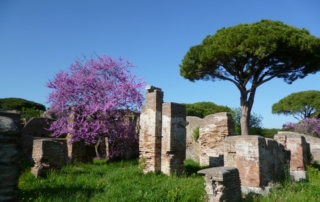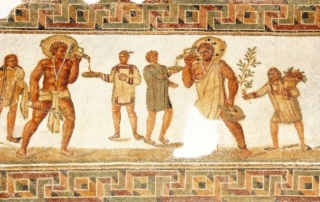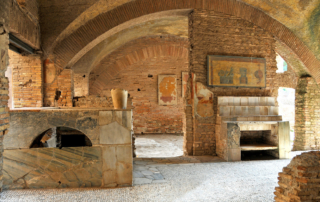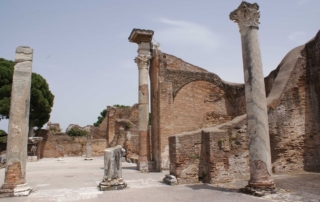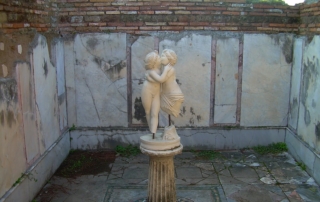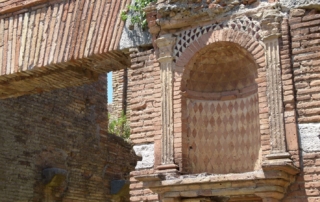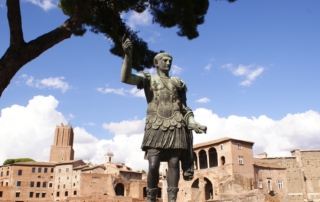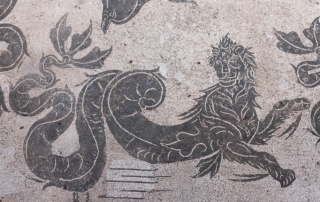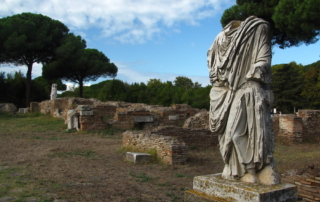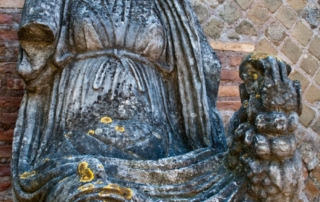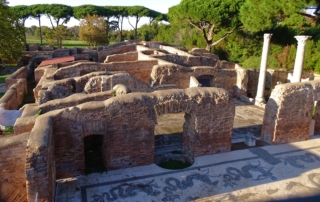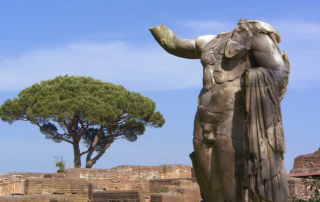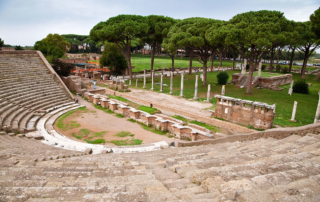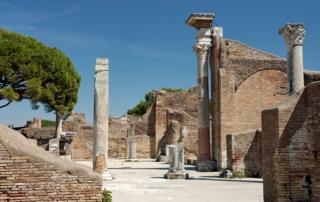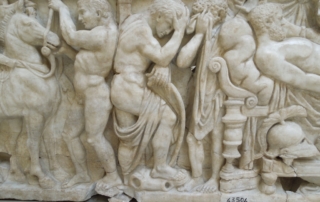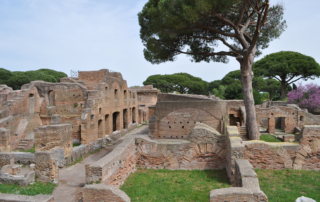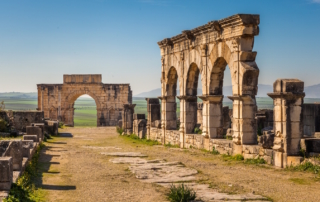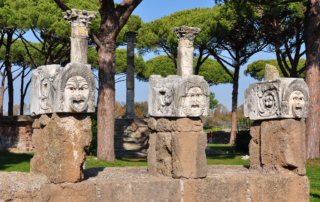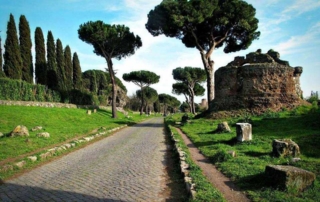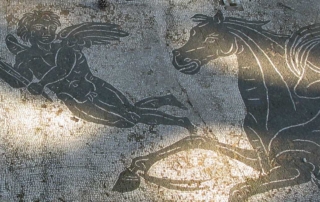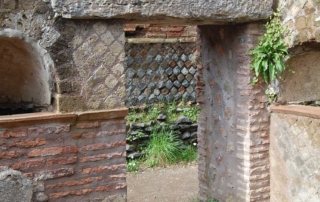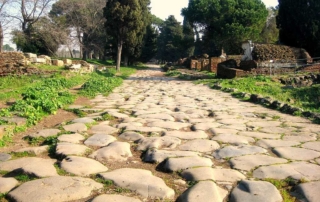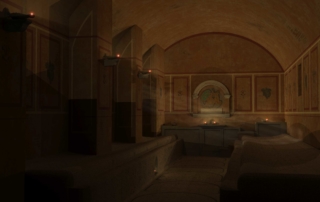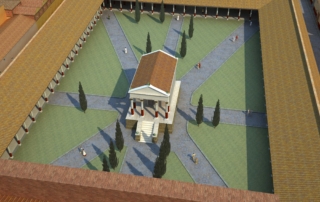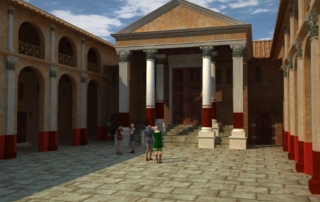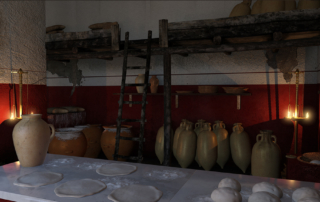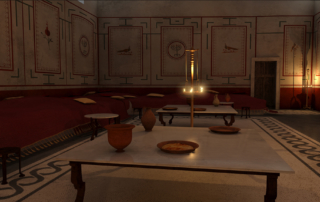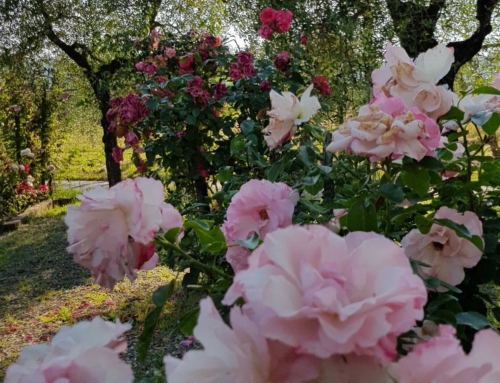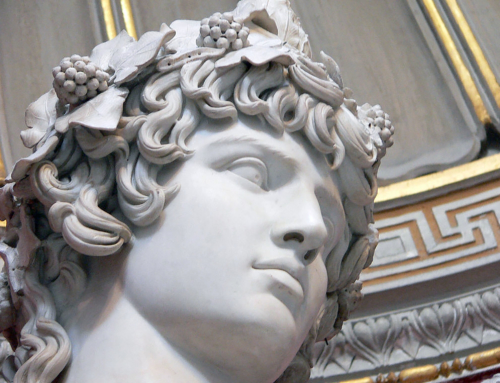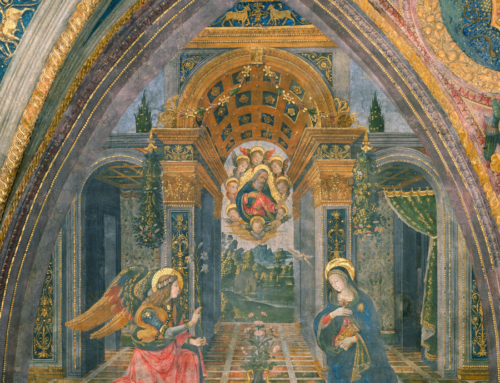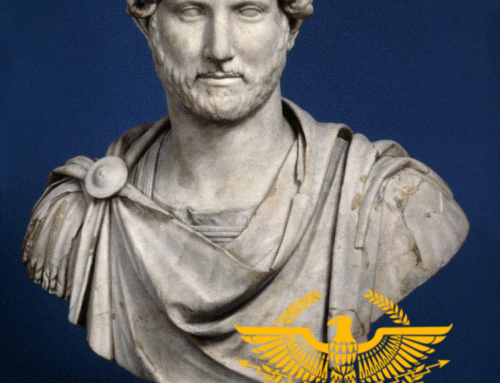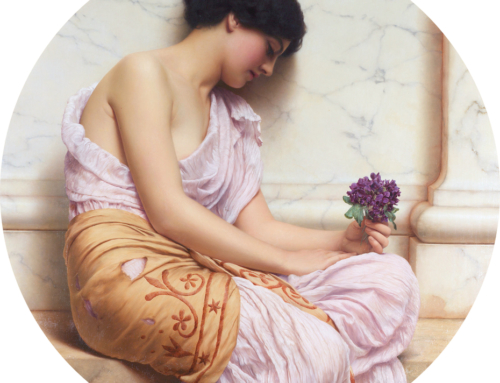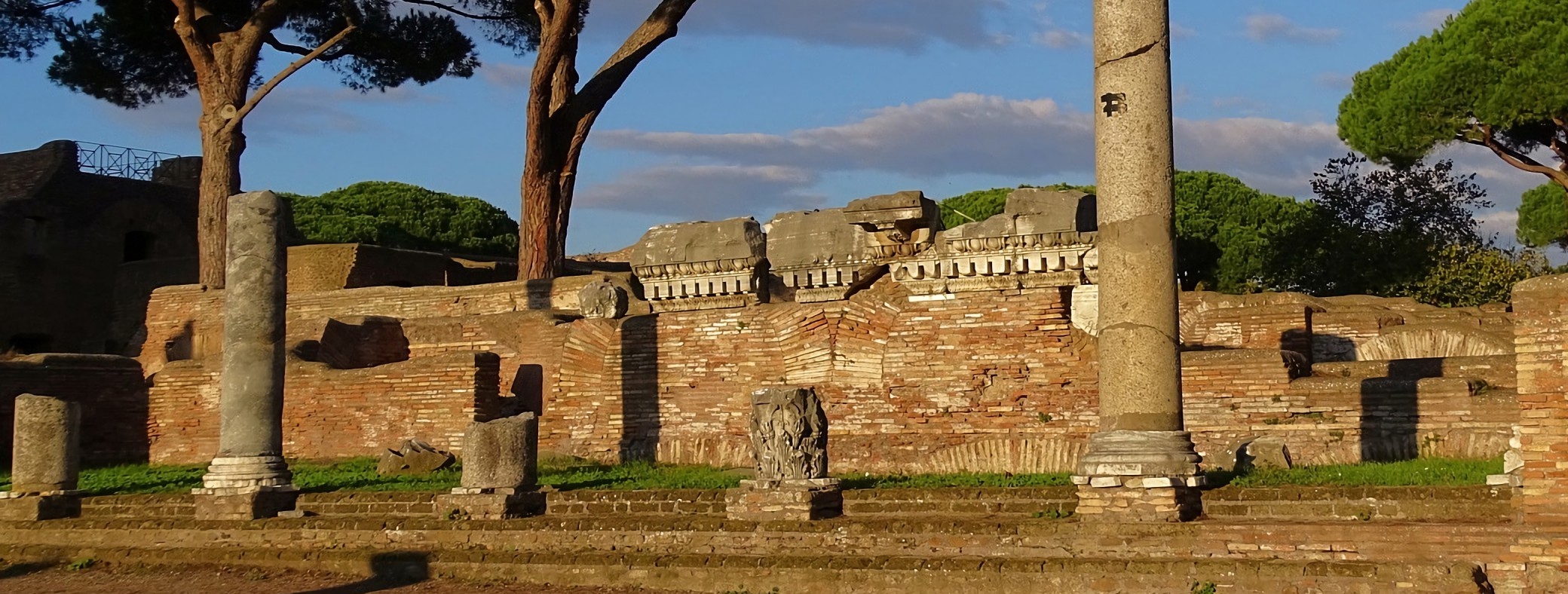
.
.
- Ostia Antica – the ancient harbour of Rome
- the earliest Ostia – 1400 – 400 BC
- how was it to live there as a slave?
- what work did they do?
- did slaves come to freedom?
over 2000 years later...
The ancient Roman city of Ostia was in antiquity situated at the mouth of the river Tiber, some 30 kilometres to the west of Rome. The shoreline moved seawards, due to silting, from the Middle Ages until the 19th century. Therefore Ostia is today still lying next to the Tiber, but at a distance of some three kilometers from the beach. Ostia is Latin for „mouth“, the mouth of the Tiber. The river was used as harbour, but in the Imperial period two harbour basins were added to the north, near Leonardo da Vinci airport. The harbour district was called Portus, Latin for „harbour“.
Here the earth absorbs the debt,
Soil removal unearths a deficit,
Deadweight tonnage weighs on the ruins
Accounting for actual total loss
Or assemblages of waves on the Tiber
Or slave labor or any diffusion.
Concerning these open-sided containers
Transactions are void, transhipments nullified,
All transit reduced to terminus
And the archaeology of commerce,
Save for the temples of worship
And the living theatre of the people.
How many slaves were there?
As the Roman empire expanded, slavery grew and became a vital part of the imperial economy. Most slaves were acquired through military conquest, although poor people occasionally sold their children into slavery and creditors could claim insolvent debtors as slaves. When Caesar conquered Alesia over a quarter of a million Gauls were enslaved. Slaves, particularly war captives, were economically more profitable than paid labour and were readily available, at least while the empire was expanding. At the empire’s peak, slaves accounted for 25-40% of the population of Italy, ie about 2-3 million slaves in Italy alone. Estimates for the whole Roman empire vary hugely between 10-18 million.
A wealthy landowner might acquire huge numbers of slaves to run his estates and businesses. The owner of Chedworth Villa owned 400 slaves who lived in slave barracks on site. Some ultra-wealthy people owned up to 20,000 slaves who did everything. Even the simplest jobs such as getting dressed or bathing required the helpf of slaves. The number of slaves made the poorest of the free working population redundant and created a mob of unemployed which had to be fed and constantly distracted – bread and circuses – if social strife was to be avoided.
How were slaves sold?
Slaves were bought and sold by wholesale slave dealers who followed the army’s conquests and shipped war captives back to the slave markets. Slaves would be sold naked, classified according to gender, age, health and character, by the quaestor, the army quartermaster and financial officer. Young male slaves were the most sought after and constituted the bulk of slaves. There was also demand for young females and slaves with particular skills, but older slaves were less valuable. At Pompeii a slave was sold for 1500 sestertii, three times the cost of a mule. Another, presumably more highly skilled, was sold for over 6,000 sestertii.
What work did they do?
Slaves worked as unskilled labourers in the mines, on farms and as on public works as porters, diggers, bricklayers and masons. They built aqueducts, roads, bridges, and public buildings and cleared sewers and roadside ditches. In commerce, slaves worked as agents, moneylenders, traders or as shopkeepers. Well educated or very able slaves might work as secretaries or accountants or agents, collecting funds and making receipts. One young slave in Yorkshire was entrusted with the management of a goldsmith’s shop. Others, particularly Greeks, might work as doctors or tutors. Many slaves managed the households of rich families as butlers, cooks, maids, hairdressers, wet-nurses and seamstresses. Soldiers often used slaves to manage their private affairs. Some slaves became gladiators.
How were slaves treated?
 Slaves had no legal status; they were property, ‘tools with the power of speech’. A master’s power over a slave was absolute. Life as a slave depended on the type of work the slave did and whether they lived in the city or the country. Life as a gladiator or in the mines was especially hard and dangerous. Farm slaves did better while household slaves, particularly if they worked for a wealthy family, might live in conditions that would have been the envy of the working poor. Slaves could become well-off in their own right and employ their own slaves. Marriage between slaves was possible but had no legal force; the children of a slave couple belonged to the slave owner and could be sold at any time.
Slaves had no legal status; they were property, ‘tools with the power of speech’. A master’s power over a slave was absolute. Life as a slave depended on the type of work the slave did and whether they lived in the city or the country. Life as a gladiator or in the mines was especially hard and dangerous. Farm slaves did better while household slaves, particularly if they worked for a wealthy family, might live in conditions that would have been the envy of the working poor. Slaves could become well-off in their own right and employ their own slaves. Marriage between slaves was possible but had no legal force; the children of a slave couple belonged to the slave owner and could be sold at any time.
Physical punishment and sexual abuse must have been commonplace, but relations between master and slave could be close. The Latin word familia does not mean family in our sense but the wider household, and included slaves and ex-slaves. Pliny believed that slaves were naturally savage and should be treated accordingly, but Seneca argued that slaves would work harder if they were well-treated. Some slaves were allowed to be buried in the family tomb. At Pompeii an expensive gold bracelet found on the body of a woman was inscribed ‘From the master to his slave girl.’ Slaves wore poorer clothes than their owners and ate poorer food. They slept at the top of the house, or on the floor. In the later empire, conditions nominally improved with the advent of Christianity and new laws, but these changes were routinely ignored and many priests continued to keep slaves.
Slaves and sex
The bodies of slaves, both men and women, were there for the taking. No-one minded if a man slept with a slave. That was, in part, what slaves were for.
Could slaves become free?
 Domestic slaves might raise enough money to buy their freedom or might be granted their freedom through a process known as manumissio. This was not an act of generosity so much as a way of reducing costs as the master no longer had to pay to feed and support them. Freed slaves were called liberti and formed a separate class in Roman society. Most ex-slaves remained attached to the household and continued to work for their former master. Some grew rich and influential, although they did not enjoy the same status as citizens.
Domestic slaves might raise enough money to buy their freedom or might be granted their freedom through a process known as manumissio. This was not an act of generosity so much as a way of reducing costs as the master no longer had to pay to feed and support them. Freed slaves were called liberti and formed a separate class in Roman society. Most ex-slaves remained attached to the household and continued to work for their former master. Some grew rich and influential, although they did not enjoy the same status as citizens.
.
.
Did slaves resist?
 The size of the slave population meant that Romans lived in constant fear of a slave uprising. Slave rebellions carried the severest penalties. The Thracian slave-gladiator Spartacus led a revolt of 70,000 slaves which was put down by Crassus with great brutality. If a slave murdered his master, all the master’s slaves could be legally executed; four hundred slaves were put to death when one master was murdered. Stocks or leg irons have been found at a number of farms outside Pompeii. At one villa human leg-bones were found in shackles, suggesting that the fettered slaves had been unable to escape when Vesuvius erupted, and had died where they lay. When slaves did attempt to escape, bands of slave hunters were employed to hunt them down. Recaptured slaves were branded with the letter ‘F’ for fugitives and were required to wear iron collars.
The size of the slave population meant that Romans lived in constant fear of a slave uprising. Slave rebellions carried the severest penalties. The Thracian slave-gladiator Spartacus led a revolt of 70,000 slaves which was put down by Crassus with great brutality. If a slave murdered his master, all the master’s slaves could be legally executed; four hundred slaves were put to death when one master was murdered. Stocks or leg irons have been found at a number of farms outside Pompeii. At one villa human leg-bones were found in shackles, suggesting that the fettered slaves had been unable to escape when Vesuvius erupted, and had died where they lay. When slaves did attempt to escape, bands of slave hunters were employed to hunt them down. Recaptured slaves were branded with the letter ‘F’ for fugitives and were required to wear iron collars.

